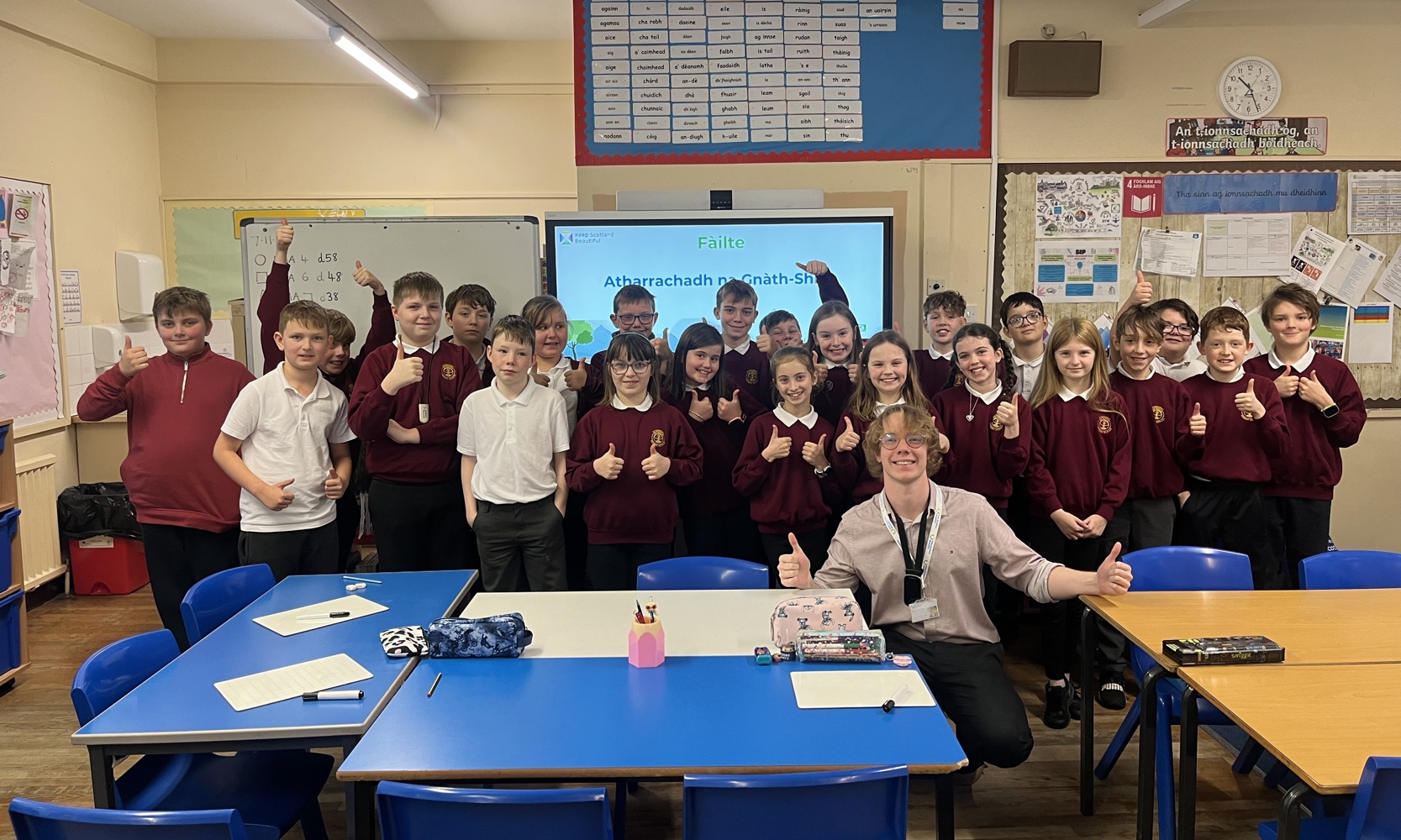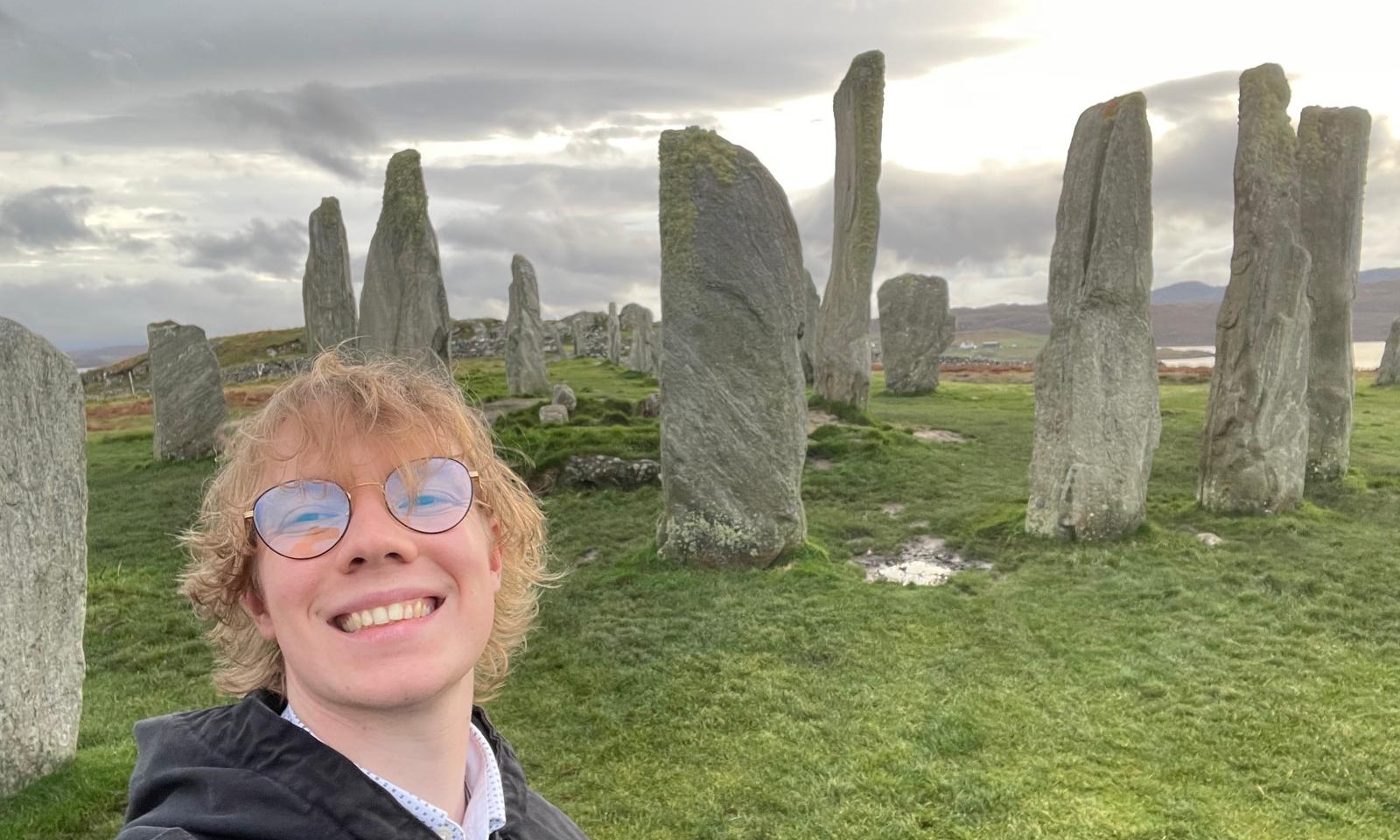The Isle of Lewis, a vibrant yet remote part of the world, is a place where the Gaelic language continues to thrive. In early November, Jonathan, our Gaelic Education and Learning Officer, visited the island to strengthen the connection between the Gaelic language and climate action for local schoolchildren. This in-person trip highlighted our dedication at Keep Scotland Beautiful to ensuring that even the most rural areas of Scotland feel supported and included by us.

While on my trip, the first thing that struck me was the breath-taking beauty of the landscape, often framed like a painting through the windows of Gaelic Medium Education schools. This served as a daily reminder of what we strive to protect; the deep commitment to the Gaelic language and the improvement and preservation of Scotland’s environment.
During my visit, I had the privilege of exploring the Callanish Stones - a site rich in history and mystery - while enjoying the delightful company of Highland cows and using the towering wind turbines as a practical example of renewable energy in action.
When visiting schools, I assessed pupils' prior knowledge by asking a simple question: What do you know about climate change? - or, as I phrased it in Gaelic, Dè th’ ann an atharrachadh na gnàth-shìde? Responses varied, with many pupils unsure, highlighting the clear need for climate education, especially given the tangible threats climate change poses to the area. According to SEPA, projected “sea level rise of 0.55m for the Lewis and Harris coastal area by 2080 could increase the number of residential properties at risk of flooding from 40 to 160, and non-residential properties from 90 to 190”. This brings the issue much closer to home than many realize, underscoring the importance of delivering lessons that are both effective and engaging.

To prepare for my trip, I designed a variety of workshops tailored to educate all stages of the primary school in appealing and meaningful ways. Activities included building an environment tower, layering up just like our planet, and completing a spot-the-difference environmental challenge. These interactive tasks were designed to spark curiosity and lay the groundwork for deeper discussions about sustainability.
Building on these activities, I guided the pupils in brainstorming ways their school could become more eco-friendly. They then worked collaboratively to create an action plan tailored to their school’s needs. This process not only reinforced their learning but also instilled a sense of responsibility, empowering them to take meaningful steps toward making their school a greener place.
“The pupils thoroughly enjoyed the session and are keen to move forward with their action plans through the Eco Committee.” – Eileen Mackenzie, Sgoil Bhreascleit.
The engagement from the pupils was exceptional. They genuinely appreciated that a representative from Keep Scotland Beautiful had travelled so far north to share knowledge through the medium of Gaelic - the language of many of their ancestors. This connection added depth to their learning experience and highlighted the importance of preserving both their cultural heritage and the environment.

As I concluded my workshops, I asked the final question: What do you know about climate change now? - or, as I phrased it in Gaelic, Dè tha sibhse a' smaoineachadh a tha atharrachadh na gnàth-shìde a’ ciallachadh a-nis? A flurry of hands shot up, as pupils confidently shared not only what climate change is but also its causes and the actions they can take to combat it. Their enthusiasm and understanding were inspiring, marking a successful conclusion to the sessions.
“The session was very enjoyable, and the pupils learned a lot about climate change and global warming.” – Katy Graham, Sgoil nan Loch.
In summary, my trip to the Western Isles provided a fantastic window into some of the values that make Scotland so beautiful: the warm, welcoming people eager to engage, the rich tradition of Scottish Gaelic deeply ingrained in the culture, and the stunning scenery that stretches endlessly across the landscape. I would highly recommend the Western Isles to anyone, and I am very grateful for the opportunity to both teach and explore such a remarkable part of our country.


